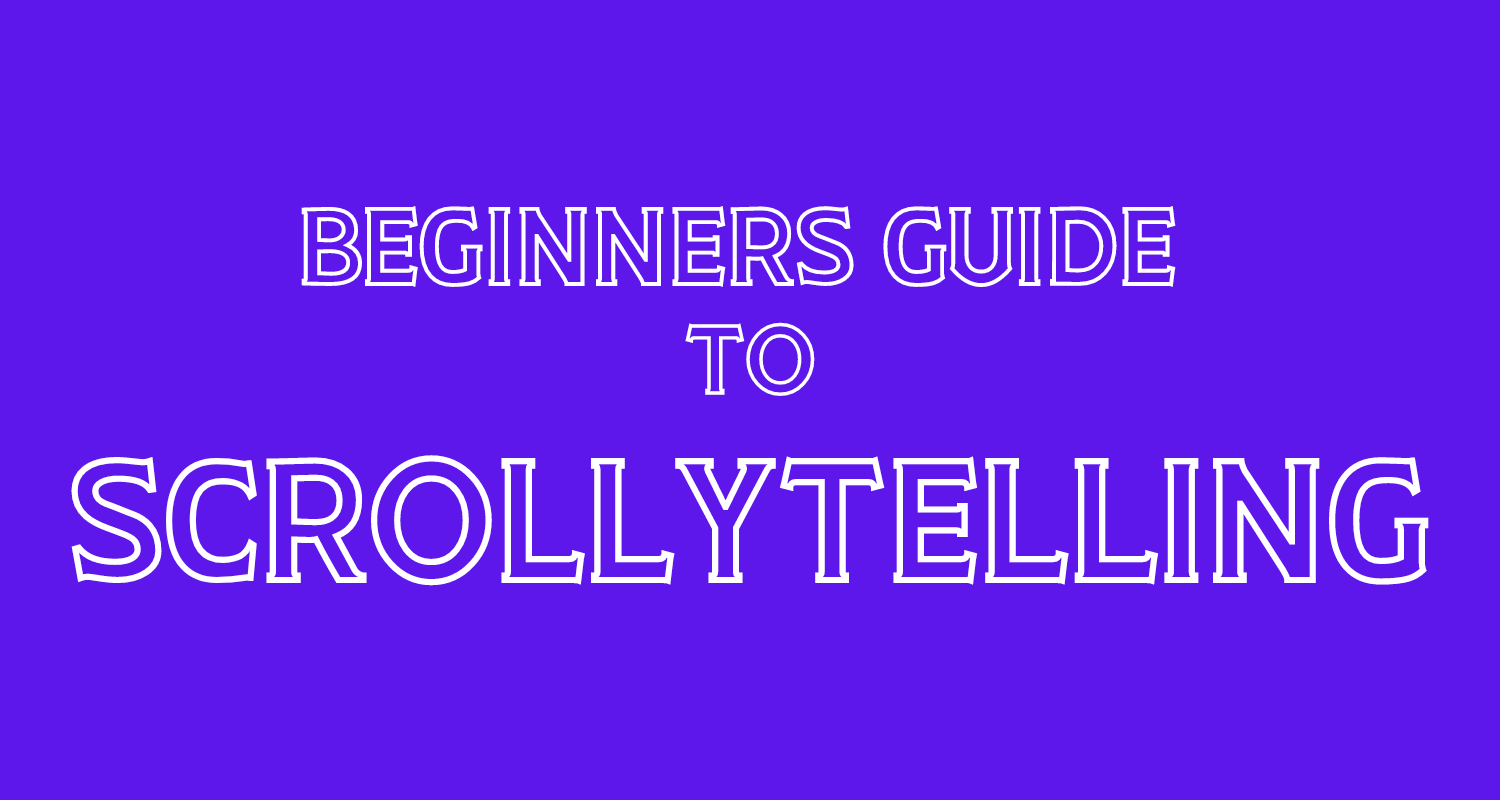
So you want to create a digital story, but aren’t sure where to begin? You’ve heard the term “scrollytelling” and are curious what exactly that means. Maybe you think it has something to do with scrolling up and down. Or perhaps this is something entirely different than anything you have ever heard of before. Either way, you have decided that it’s time for you to get informed about this topic. This blog post will help introduce you to scrollytelling, revealing what it is, why it’s useful, and some examples of how other people have used this method for storytelling.
Scrollytelling is the art of combining storytelling with elements of design, animation, and soundscapes to create a unique digital experience. Scrollytelling can be done in a variety of ways, but the most common way is to tell a story through sequential images that scroll up and down the page. Another form of scrollytelling is to use text combined with visual elements that scroll up and down the page. The term “scrollytelling” was coined by design strategist and creative director Tom Pickering. The idea of scrollytelling is to combine elements of design, animation, and soundscapes to create a unique digital experience that allows a story to be told through the different pieces of content.
Creating a scrollytelling involves a lot of creativity and careful thought, but with the right planning, it can be a very rewarding experience. A scrollytelling is not something that you can make in an hour. It requires a lot of thought and planning, so you’re able to fully create a piece that is both meaningful and engaging. Here are a few tips to get you started: Pick a topic - First, you need to decide what you want to write about. It can be anything, but you need to make sure it’s something that you’re passionate about. That way, you’ll be able to create a story that is both engaging and meaningful. Pick a visual theme - Next, you need to pick a visual theme for your scrollytelling. This can be anything from colours to shapes to textures. You want your visual theme to reflect the topic you’re writing about. It should add to the story, not distract from it. Pick a format - After picking a topic and visual theme, you need to decide what format you’re going to use for your scrollytelling. You can either write a long written story or use a combination of text and visuals. Pick a soundscape - Finally, you need to pick a soundscape for your scrollytelling. This is the background sound that plays in the background of your story. You want the soundscape to compliment the visuals and story. Pick a tempo - The tempo is the speed at which the content in your scrollytelling moves. You want to pick a tempo that is neither too slow nor too fast. Create a storyboard - The next step is to create a storyboard. A storyboard is sort of like a map that shows you where each piece of content in your scrollytelling will go. A storyboard shows you where each piece of content in your scrollytelling will go. It also shows you how they will be sequenced and linked together.
Storytelling is an engaging and meaningful way to connect with people. It can help to inform, inspire, and move people in ways that a lot of other mediums can’t. It’s also an engaging way to stay relevant as a business as more and more people are moving towards digital content. There are a few reasons why storytelling is important in today’s digital world. First, it helps to stay relevant as a business. Storytelling has always been one of the best ways to inform, inspire, and move people. Now, more than ever, it’s important for businesses to be engaging, relevant, and moving people if they want to succeed. Second, storytelling can help you to stand out from the crowd. There are many businesses out there, but there are few that are engaging like the story of a person. storyboard - The next step is to create a storyboard. A storyboard is sort of like a map that shows you where each piece of content in your scrollytelling will go. A storyboard shows you where each piece of content in your scrollytelling will go. It also shows you how they will be sequenced and linked together.
There are many examples of scrollytelling that can help you to better understand what it is. Here are a few examples: -
Storytelling will always be important, but it’s even more important that we use the best medium to tell our stories. We live in a digital world, and there are few better ways to engage people than through visual and audio experiences. The best way to create digital experiences is through the art of scrollytelling.